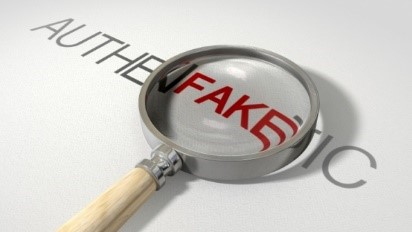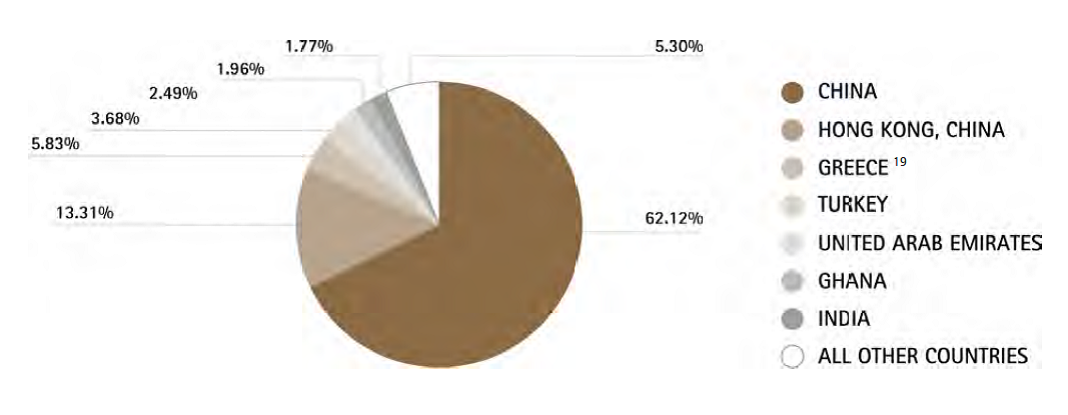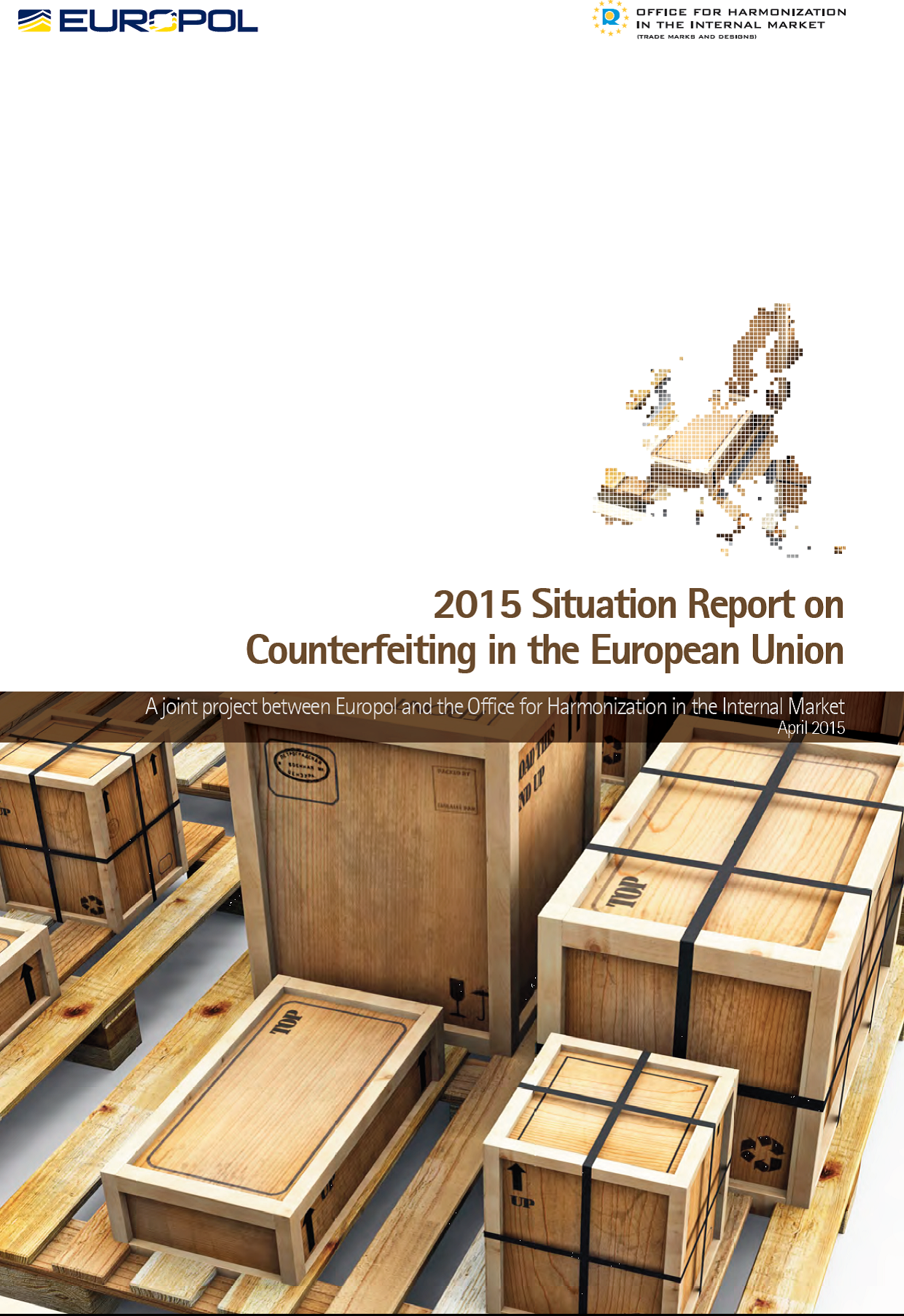

Counterfeiting Report 2015
July 19, 2015
Categories:
Post date:
19. July 2015 - 18:56
The Situation Report on Counterfeiting in the European Union (EU), prepared by Europol and OHIM through the European Observatory on Infringements of Intellectual Property Rights is a first try to capture the complex reality of counterfeiting in the EU in 2015.
1. Introduction
Intellectual Property Rights (IPR) make sure that innovators and creators receive profit for their work, encourage investment in research and create growth as well as quality jobs. IPR intensive industries account for more than a quarter of all jobs and more than a third of GDP in the EU. This demonstrates the important role of these rights for the economy and society in the EU, as well as the scale of potential damage that can be caused when they lose their value because of counterfeiting.
2. Spectrum of products
Counterfeited goods are no longer just poor quality clothing and accessories of luxury brands. Rather, counterfeited goods can be found in all sectors, such as pharmaceuticals, electronic goods, household products, cosmetics, automotive spare parts, pesticides, food and beverages.
This can be very dangerous for consumers: for example, cases of shampoo found to cause chemical burns to the scalp, cosmetics containing multiple unknown and sometimes toxic substances, and, using unlicensed or counterfeited batteries and laptop or phone chargers has resulted in explosions and fires.
3. Source countries of counterfeit goods
Not surprisingly, you can see below that the source country for over two thirds of counterfeit goods circulating in the EU is China. But, China is also a primary source country for the cheap production of legitimate goods.
As you can also see, the majority of source countries for counterfeits are outside the EU, although the report also underlined domestic EU production originating from Belgium, the Czech Republic, Spain, Italy, Poland, Portugal, and the UK.
A lot of the source countries are specialized in certain categories. For example India is focused on pharmaceuticals and Turkey on foodstuffs and cosmetics.
4. Transit of counterfeit goods
Products entering into Europe from the Far East and South East Asia mostly transit through Egypt, Hong Kong, Morocco, Singapore or the United Arab Emirates. These transit points are major hubs for shipping container traffic and have large free trade zones.
The counterfeiters abuse this world-wide infrastructure of 3.000 free trade zones in 135 countries for their business. Upon arriving, they change, document and relabel container loads to conceal the place of origin of the goods. Afterwards, they complete the manufacturing process by adding trademarks or packaging. This way the products reach the countries of sale.
5. Sales
Internet and e-commerce have become the most significant enablers for the distribution and sale of counterfeit goods because of its apparent anonymous character, its ability to operate across various jurisdictions, and its potential for presenting sophisticated replicas of official web shops.
6. Full Report
For detailed information (including the above chart), please see this link with all of the statistics.
Related
- "Neuschwanstein" is not a trademark!
- 1 December 2017: Madrid Monitor takes its place as the one and only tool for tracking international trademarks
- 1 January 2020 - Changes in Classifications - Trademarks, Designs, Patents and Utility Models
- 100th Anniversary of Bavaria (Germany) - A glance at trademarks, start-ups, innovation & events
- 10th Anniversary Edition - 10 Things to Know about LexDellmeier - Past, Present & Future
- 14 June 2013: Munich Patent Law Conference - Calculating Damages in Patent Infringement Cases
- 15 Top Brands - Interactive Brand Rating - Years 2000 - 2018
- 15 Years LexDellmeier - 2024 New Year Wishes
- 2014: Statistics for Community Trademarks
- 2024 World IP Day - Building Our Common Future with Innovation and Creativity


